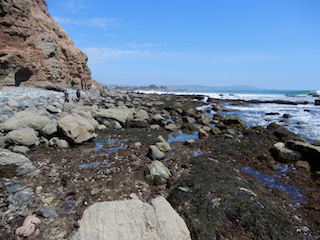
-
| 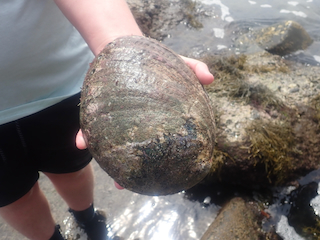
Probably a green abalone (Haliotis fulgens we rescued -- stranded upside down, but we left it upright.
| 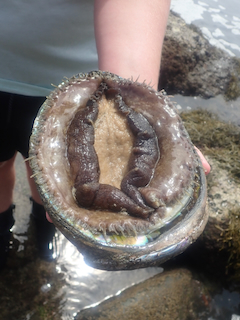
-
|
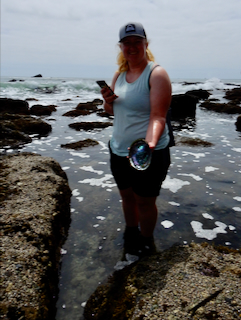
-
| 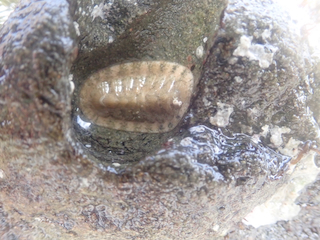
Lepidozona pectinulata
| 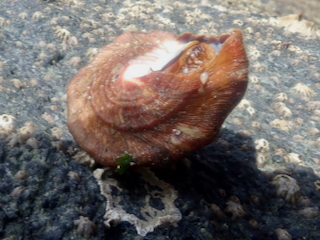
A tiny (juvenile) pyramidellid ectoparasitic snail on a quite small (for this species) juvenile wavy turban snail.
|

Lepidozona pectinulata
| 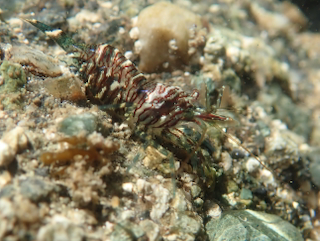
I tentatively identified this shrimp as Heptacarpus sitchensis, which crustacean expert,
Dr. Greg Jensen, reports to be the most common West Coast shrimp species. When I asked him about my identification, he replied that the rostrum is much too short
to be H. sitchensis. He thought it might instead be an unnamed species that he had seen in a tank in Santa Barbara many years ago.
| 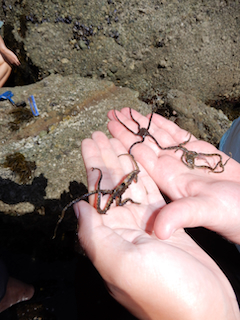
Three species of brittle stars, Panama (top), banded (right) and flat-spined (left).
|

-
| 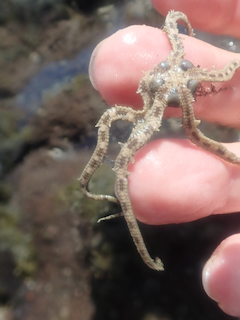
I suspect that this banded brittle star (Ophioderma annulatum) is ready to spawn.
| 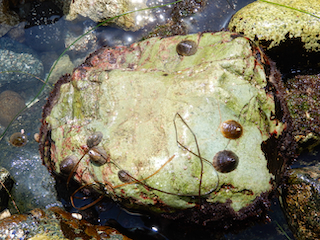
Fissurella volcano (volcano keyhole limpet) and a true limpet, probably Lottia limatula
(file limpet).
|
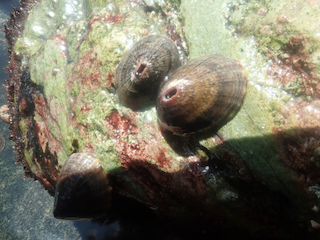
-
| 
-
| 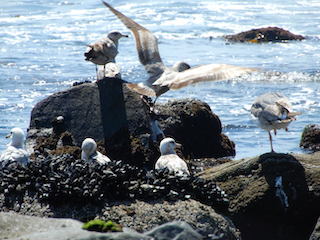
-
|
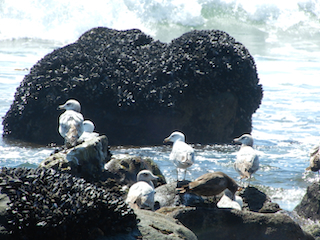
-
| 
-
| 
Mexacanthina lugubris (dark unicorn snail), now common in Orange County, whereas it was just
beginning to spread northward a decade or two back.
|
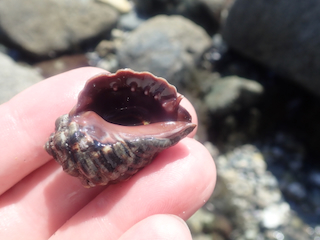
-
| 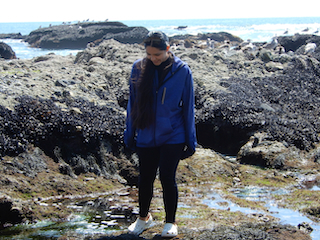
-
| 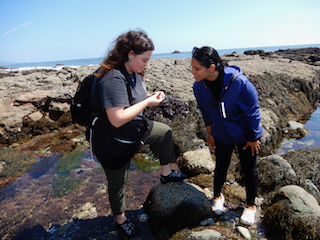
-
|

Lepidozona pectinulata
| 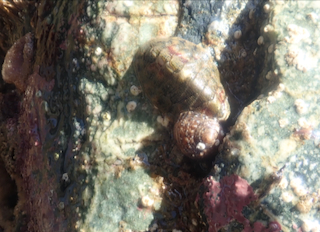
-
| 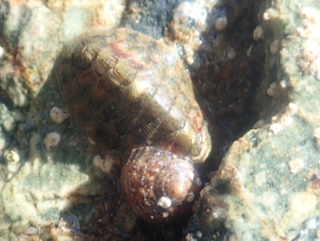
Lepidozona pectinulata and Tegula eiseni
|

Lepidozona pectinulata
| 
A two-spot octopus is doing its best to be inconspicuous.
| 
-
|
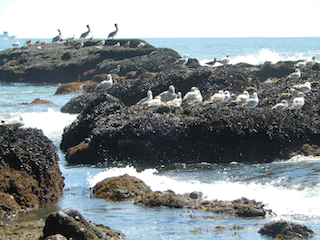
-
| 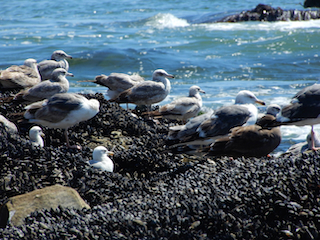
-
| 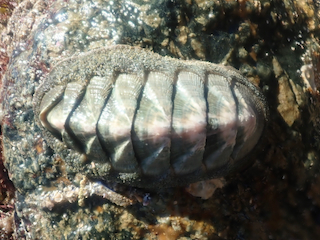
Stenoplax conspicua (conspicuous chiton)
|
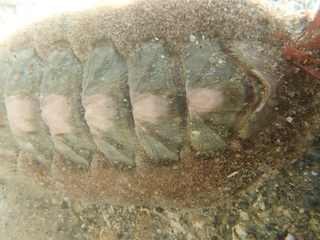
-
| 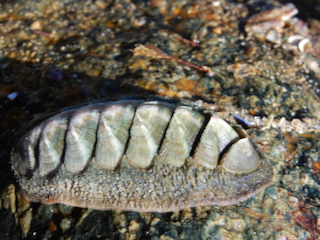
-
| 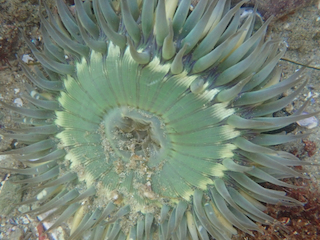
Anthopleura sola (sunburst anemone)
|
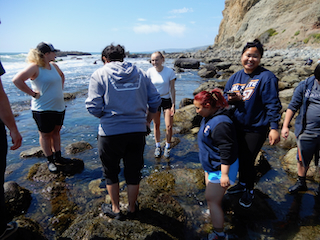
-
| 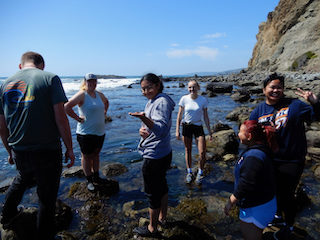
-
| 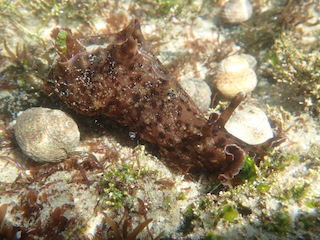
Aplysia californica (California sea hare) juvenile
|
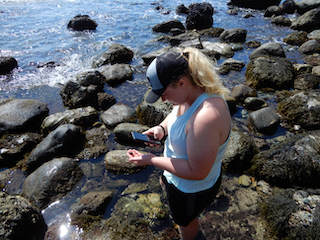
-
| 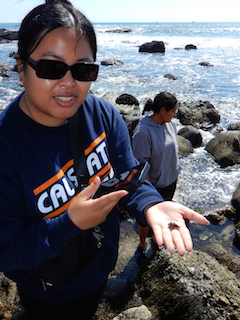
-
| 
Californiconus californicus (California cone snail)
|
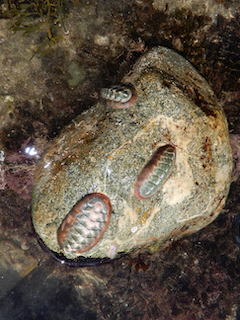
Stenoplax conspicua (conspicuous chiton)
| 
-
| 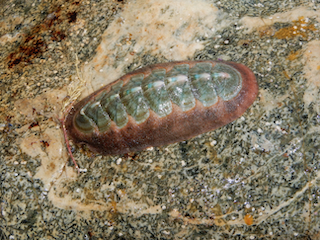
-
|

Judging from its large size, this is a female slipper snail, Crepidula onyx. This
sedentary suspension feeder will prefer to settle near a female, and will first mature as a male, later changing sex to become a female when the female eventually dies.
| 
Stenoplax conspicua (conspicuous chiton)
| 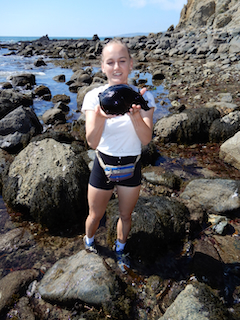
Aplysia vaccaria (black sea hare)
|
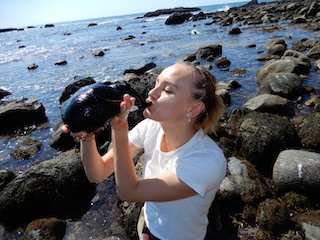
-
| 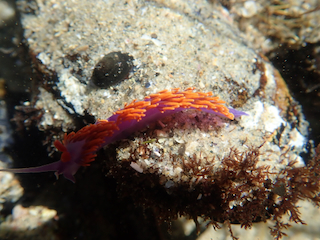
Flabellinopsis iodinea (Spanish shawl nudibranch)
| 
-
|
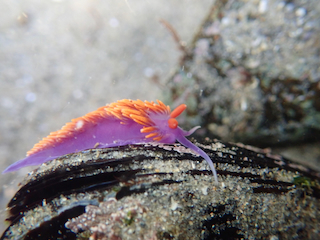
-
| 
-
| 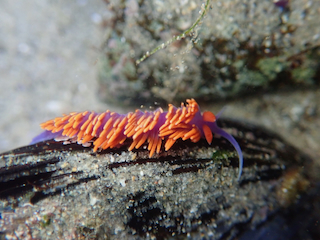
-
|
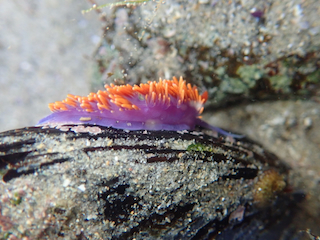
-
| 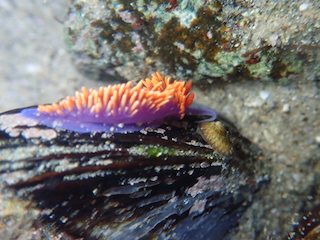
-
| 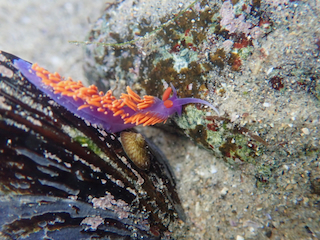
-
|

-
| 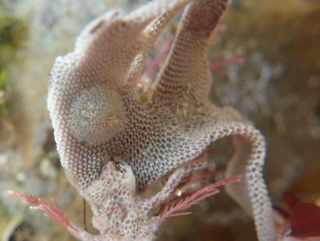
In 1986, Dr. Drew Harvell (now a professor at Cornell University) showed that the presence of the nudibranch,
Corambe steinbergae (center), a specialist predator on the bryozoan, Membranipora membranacea, will be sufficient chemosensory signal to have the
bryozoan respond with a phenotypic plastic growth of spines that encourage the slug to eat elsewhere.
I told Madeline, our bryozoan specialist who asked me about this blob on the bryozoan she was carefully observing,
that it is like when another person and you have a grizzly chasing you.
You do not have to be faster than the bear, only faster than the other person. - (Harvell 1986)
| 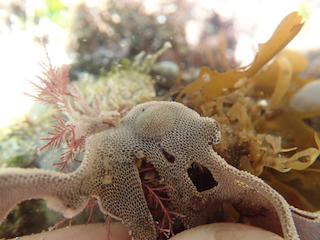
-
|

-
| 
Madeline also noticed this smaller (probably juvenile) nudibranch, Corambe steinbergae (center).
|
 Under Construction!
Under Construction! Under Construction!
Under Construction!